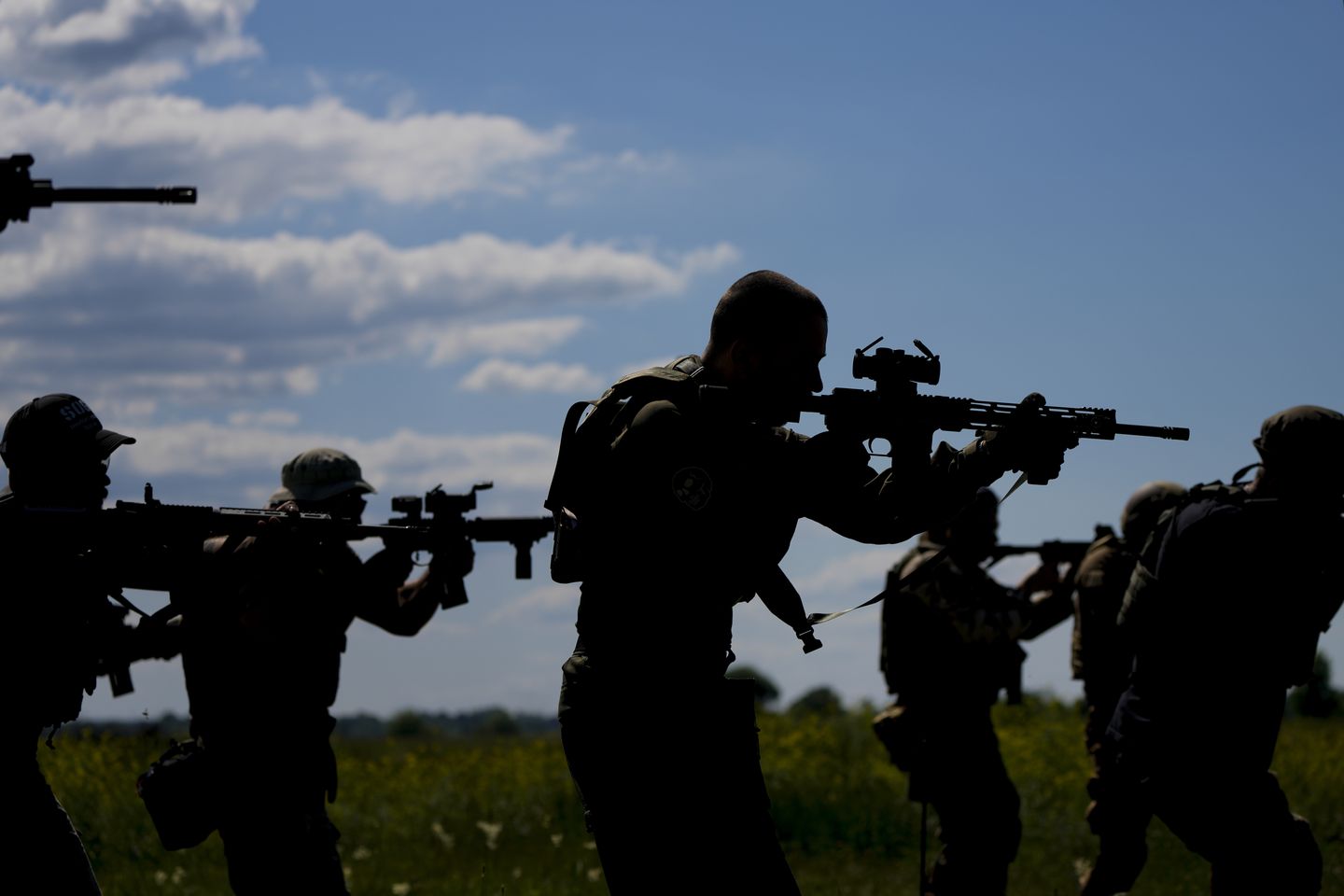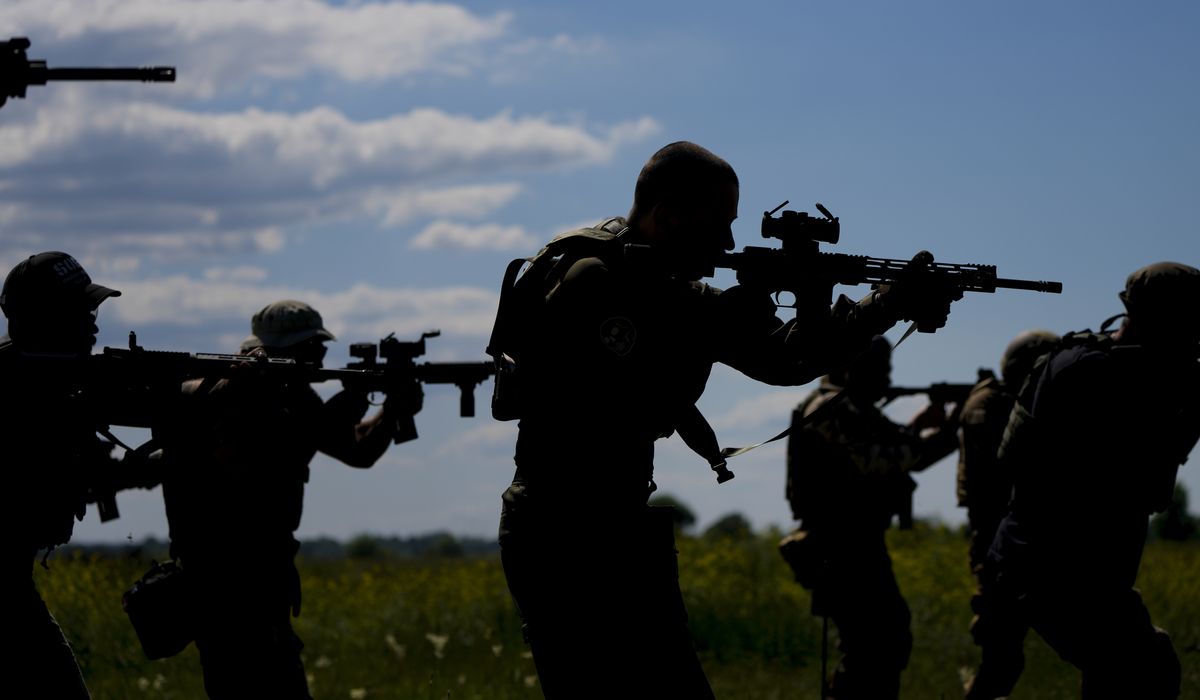

Russian military leaders are finally able to declare a measure of success in their troubled invasion of neighboring Ukraine, as a brutal but concentrated assault in the south and east has steadily advanced in recent days in the long-disputed Donbas region.
Defense Minister Sergei Shoigu told reporters in Moscow Tuesday that Russian troops now control virtually all of the far eastern Luhansk region — encompassing some 10,000 square miles — and were on the offensive in the pitched battle for control of Sievierodonetsk, the largest city in the region not under Russian control. In addition, Mr. Shoigu said, Russian troops have removed mines and reopened the port of Mariupol, captured from Ukrainian forces after a brutal siege last month.
“As a whole, 97% of the territory of the Luhansk People’s Republic has been liberated to date,” the Russian minister said.
Although Ukrainian forces remain dug in and are expecting a major boost as sophisticated U.S. and allied weaponry arrive in the coming days, Russian President Vladimir Putin for now controls the coveted “land bridge” across southern Ukraine linking pro-Moscow separatist forces in Luhansk and neighboring Donetsk with Crimea, the peninsula Mr. Putin forcibly annexed from Kyiv in 2014.
And for virtually the first time since repelling the first waves of the Russian attack that began Feb. 24, Ukrainian President Volodymyr Zelenskyy and his aides are acknowledging significant daily casualties from the fighting in the east and south and feeling the need to explain why Ukrainian forces have fallen back in some areas.
“Don’t let the news that we’ve ceded something scare you,” presidential adviser Mykhailo Podolyak said in a video address Tuesday, according to the Associated Press. “It is clear that tactical maneuvers are ongoing. We cede something, we take something back.”
Luhansk Gov. Serhiy Haidai appeared to confirm Mr. Shoigu’s contention that Russian forces hold key sections of Sievierdonetsk, with the two sides still in a fierce fight for control.
“The toughest street battles continue, with varying degrees of success,” he said.
Outside observers also say they sense a change in tone in Kyiv, where triumphalist rhetoric after surprising early victories has given way to a grim realization that Russia’s retooled and refocused campaign in the Donbas is likely to mean a long and costly war of attrition.
“The Ukrainian defenders are wisely withdrawing in the face of this reckless barbarism, but at a high price to their own morale and their will to continue the fight,” noted Frederick W. Kagan, a senior fellow and director of the Critical Threats Project at the American Enterprise Institute, in a long analysis of the state of the fighting for Time magazine this week. “Ukrainians are starting to doubt that they can prevail for the first time since they won the Battle of Kyiv.”
Before the invasion began, Russia and Russia-allied forces controlled an estimated 7% of Ukrainian territory, including Crimea. Mr. Zelenskyy last week estimated that Russia now holds 20% of the country, including a sizable chunk of Ukraine’s industrial heartland in the Donbas.
Ukrainian defense officials did claim one success this week, saying an intended Russian naval blockade has been pushed more than 60 miles off from the country’s Black Sea coastline, lessening the threat of bombardment by sea.
Once totally controlled by Russian vessels, the northwestern part of the Black Sea has become a “gray zone,” Ukraine’s Defense Ministry said in a message Monday on the social messaging site Telegram.
Deeper problems
Yet, paradoxically, Mr. Kagan is one of a growing number of military analysts who say the modest gains on the ground can’t mask the deeper problems Russia faces. The Kremlin long ago abandoned its larger hopes of “decapitating” the government in Kyiv, and the offensive in the east is being carried out by exhausted, unmotivated troops hastily relocated from other fronts in the fight.
Recent Russian progress, he said, is a “mirage,” an effort by Mr. Putin to break the will of Ukrainian defenders before his own forces and its decimated senior officer corps fall apart.
“There is no vast mobilization of Russian troops preparing to enter the war, no untapped reserves of combat-ready troops to send, no more areas of the front from which to draw fresh troops for another drive,” he wrote. “Even is Putin ordered [a] general mobilization tomorrow, fresh troops would not start streaming into Ukraine for many months — such are the realities of mobilizing and training soldiers even to be cannon fodder.”
Retired Gen. David Petraeus, former commander of U.S. troops in Iraq and Afghanistan, said Russian hopes of encircling entrenched Ukrainian defensive forces in the Donbas front lines look increasingly unlikely, telling Bloomberg News Tuesday that Ukrainian counterattacks on the Russians’ northern and western flanks could “collapse the edges” of the Russian position before it can be reinforced.
Gen. Petraeus also said Ukrainian defenders soon will be boosted by a “staggering” amount of U.S. and allied weaponry and longer-range artillery that can target Russian supply lines and rear-guard positions.
Longtime Russian military analyst Pavel K. Baev, writing this week in the Eurasia Daily Monitor, was equally pessimistic about Russia’s larger military ambitions.
“Russian troops keep pushing into the ruins of Sievierodonetsk behind heavy artillery barrages, but they cannot deliver anything resembling the elegant enveloping operations that are so highly valued by Russia’s military theorists,” he wrote Monday. “The sequence of minor tactical successes over the last couple of weeks may, in fact, bring strategic defeat closer, as tired battalion tactical groups take more casualties and can only be merged together rather than reinforced due to the lack of reserves.”
The British Ministry of Defense, in its daily intelligence assessment of the fighting, said Russian commanders may be under growing pressure for a major breakthrough given the amount of firepower targeted on smaller towns such as Sievierdonetsk, Popasna and Izium.
“Russia will almost certainly need to achieve a breakthrough on at least one of these axes to translate tactical gains to operational level success and progress towards its political objective of controlling all” of the Donetsk region, the ministry said on Twitter.
Separately, the Associated Press reported that U.S. military advisers have begun training Ukrainian forces on a new generation of multiple rocket launchers President Biden authorized last week. The training is being held in Germany and other European sites, and the “High Mobility Artillery Rocket System,” or HIMARS, could be deployed in Ukraine by the end of the month.
• This article is based in part on wire service reports.
